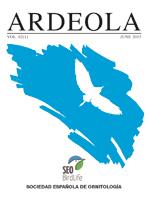The presence of the lanner falcon Falco biarmicus feldeggi in Sicily was modelled by generalized linear models using climatic, topographic, ecological and land-use variables at both the landscape (UTM cells of 10 × 10 km) and the home range (12.56 km2) spatial scales. At the landscape scale, a significant spatial autocorrelation of the lanner population, corresponding to the longitudinal distribution of sites, was found, with the species occurring within the most xeric UTM cells. There was also a negative relationship between falcon presence and potential evapo-transpiration values, either in the coldest months or throughout the year. The same negative relationship was also seen with the surfaces of CORINE artificial areas, thus showing that the species has a low tolerance to any anthropogenic landscape. At home range scale, our predictive models revealed a preference for territories with steep slopes surrounded by natural grassland, sclerophyll vegetation, arable land and agricultural land. The lack of spatial correlation and the identification of specific preferred land use classes, suggests that the home range scale is more appropriate than the landscape scale for predicting the occurrence of lanner falcons. The maintenance of a stable lanner falcon population in Sicily should be addressed at both small and large scales.
How to translate text using browser tools
1 June 2015
Ecological Modelling of the Distribution of the Lanner Falcon Falco biarmicus feldeggii in Sicily at Two Spatial Scales
Massimiliano Di Vittorio,
Andrea Ciaccio,
Salvatore Grenci,
Luca Luiselli
ACCESS THE FULL ARTICLE

Ardeola
Vol. 62 • No. 1
June 2015
Vol. 62 • No. 1
June 2015
escalas espaciales
habitat preference
halcón borní
lanner falcon
preferencia de hábitat
Sicilia
Sicily




